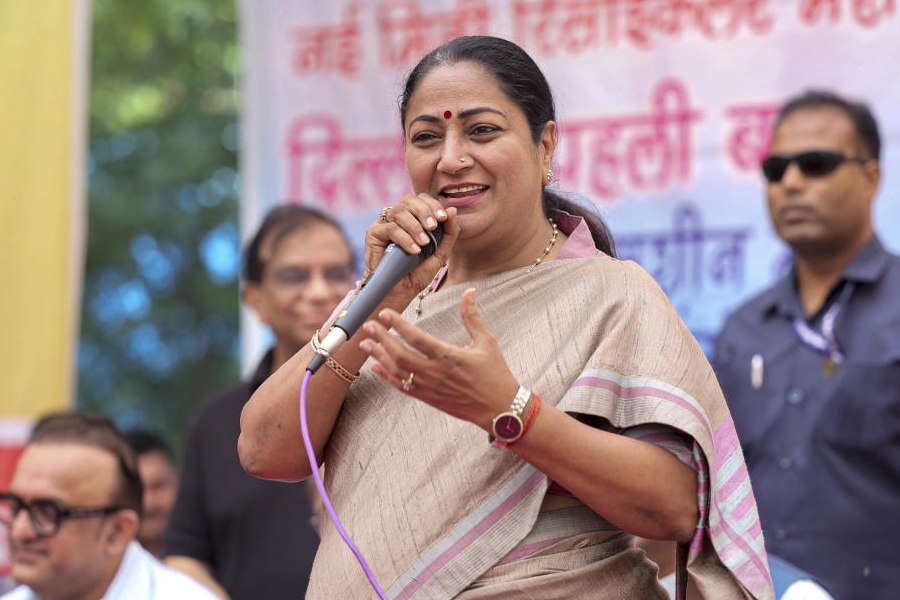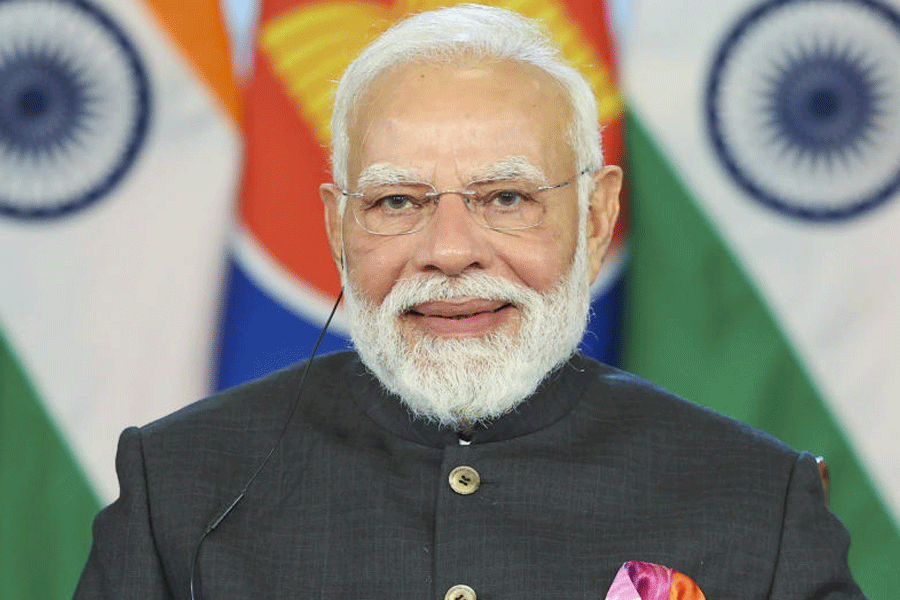
Picture by Ritupallab Saikia
Guwahati, April 21: They may come in flashy fluorescent reds or demure greens, but this spring seems to have brought the Bihu stage of Assam new male couture - dhotis.
While singer Dikshu says he makes it a point to wear dhotias traditional Assamese apparel on the first day of the Assamese month of Bohag, Zubeen, this time around, has gone for a green one, worn at times like a Malayali mundu!
The women, though, have had to stick to the Assamese mekhela sador - it does not get any more traditional than that - especially when organisers last year refused to allow a leading singer on stage because she was in salwar kameez. ("not traditional," they said.)
The Pub Guwahati Bihu Xonmiloni at Chandmari in Guwahati last year prevented Zublee - whom they had invited for a solo performance - from getting onstage for not wearing "traditional Assamese mekhela sador".
The All Assam Bihu Sanmilani Samannayrakshi Samiti last year made a call to artistes and Bihu organisers to wear traditional dresses on stage. Although the committee replaced the word "traditional" by " marjito (decent)" following controversies over the issue, their call seems to have brought about the wardrobe change.
Singer Manas Rabin was seen in dhotiat several functions this year. Dikshu also wore a red dhoti on the first day of Bohag. Zubeen joined the bandwagon.

He, of course, had got a little belligerent a few days ago. "If anyone asks me to wear a dhotiI will undo his!" he had said. In Upper Assam's Golaghat town, he was in traditional attire.
"It is comfortable to wear. I wore it last year too. But it has no connection with the appeal of the coordination committee of Bihu functions," Zubeen added.
His comment on dhoti - about undoing the knot - had irked the 23 Bihu committees under Brihattar Guwahati Bihu Sanmilani Samannayrakshi Samiti so much they later decided not to invite him to perform.
Manas Rabin said he started wearing dhotias a reaction to the defiance of some artistes to the call of the coordination committee.
"Mine is an act of defiance to some artistes saying they would not wear dhotis. I felt that those artistes had not merely defied the call of the committee, they insulted our traditional dress. That is why I started wearing dhoti. And people have loved it," Rabin said.
The general secretary of the All Assam Bihu Sanmilani Samannayrakshi Samiti, Pranab Goswami, was happy with the development. "This is a very good sign. Last night we saw Zubeen wearing a dhoti. It does not matter whether it is white or colourful. The pandas of Kamakhya temple wear red dhotis, while the xatradhikars (head priests of xatras) wear white ones. We congratulate Zubeen for wearing dhoti," he said.
"We have seen that besides the artistes the Bihu organisers are also wearing traditional dresses on stage. We think our call has yielded some results. The Bihu organisers have also been seen trying to wrap up programmes by midnight. Although they have not succeeded always but they are trying," said Goswami.
Dikshu said he had been wearing the red dhoti for the past five years. "I have been wearing it for the past five years. I wear it only on the first day of the month of Bohag. It was designed by my wife," he said.
Well, so much for the four-and-a-half yard wonder. It's male couture now! Happy Bihu everyone!











